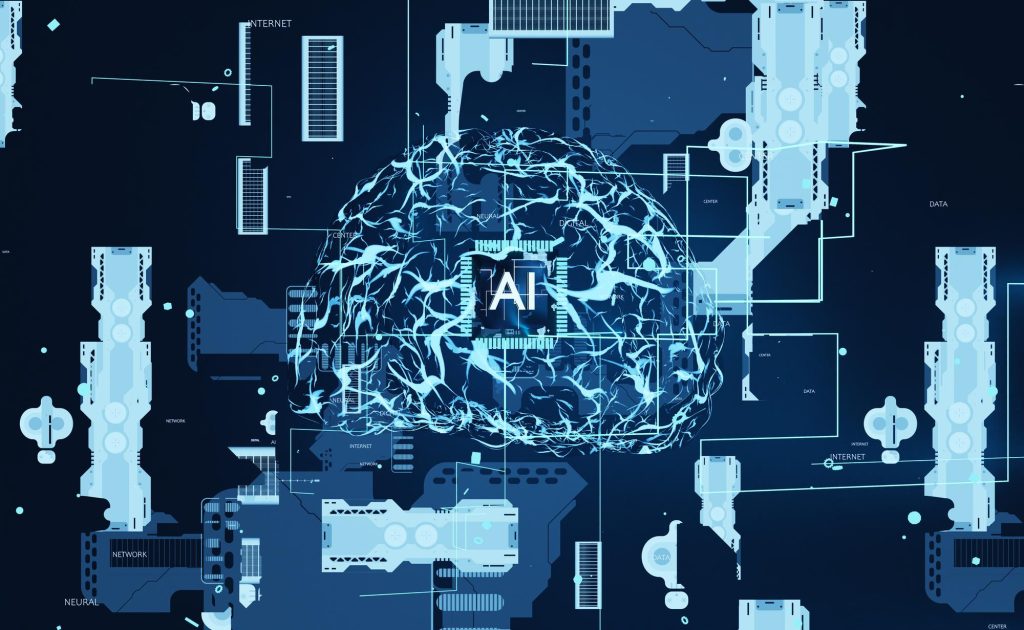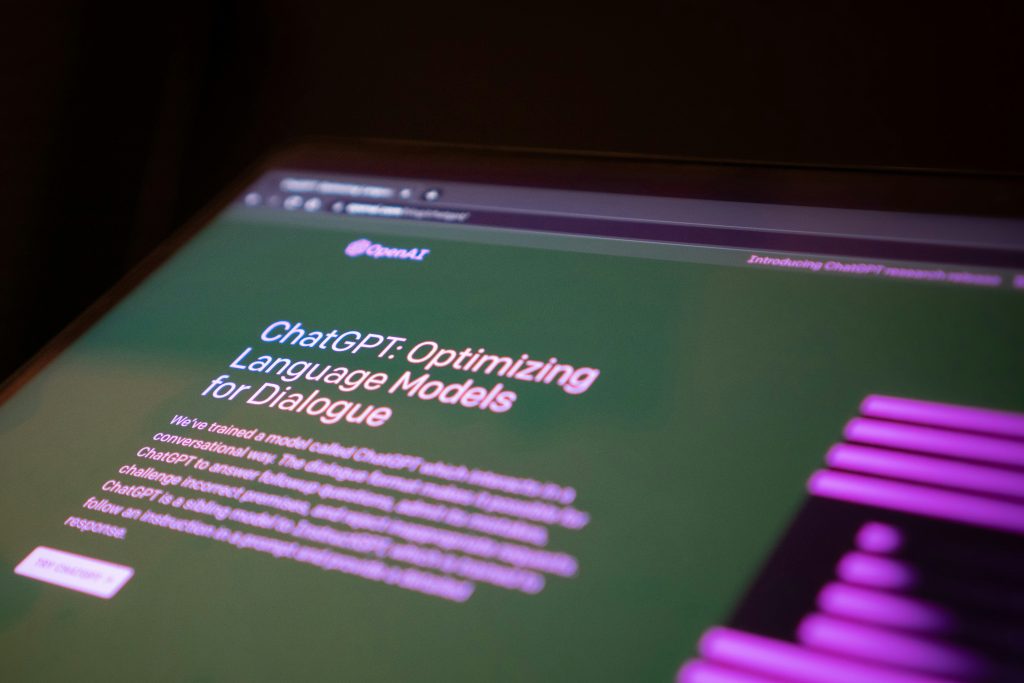Generative AI has been making waves across various industries. This article serves as a comprehensive guide to generative AI, covering its fundamentals, evolution, benefits, challenges, practical applications, and prospects. Readers will gain insights into the current landscape of generative AI and its implications for the future of work and human-machine collaboration.
Generative AI refers to a subset of AI technology that enables machines to learn from existing data and autonomously generate new, realistic content across different domains. Unlike traditional AI systems, which are task-specific, generative AI can produce diverse outputs, including images, text, music, and more.
Generative AI holds immense significance in fields such as healthcare, manufacturing, marketing, and software development. By automating content generation tasks and unlocking new creative possibilities, generative AI has the potential to revolutionize workflows, drive innovation, and enhance productivity across industries.
Generative AI operates on the principle of learning from existing artifacts to produce new, realistic content. At the core of generative AI are sophisticated techniques such as Foundation Models, Generative Adversarial Networks (GANs), and Variational Autoencoders (VAEs), which enable machines to generate diverse forms of content.
Generative AI systems learn from large datasets to understand patterns and relationships within the data. By analyzing existing artifacts, such as images, text, or music, these systems can generate new content that exhibits similar characteristics to the training data.
Foundation Models, such as OpenAI’s GPT (Generative Pre-trained Transformer) series, serve as the backbone of many generative AI applications. These large language models are trained on vast amounts of data and can be fine-tuned for specific tasks. Additionally, techniques like GANs and VAEs enable the generation of high-quality, realistic content by pitting two neural networks against each other or by learning a probabilistic distribution of the data, respectively.
Generative AI has diverse applications across industries, including image generation, text synthesis, music composition, and more. From creating personalized content for marketing campaigns to assisting designers in product development, generative AI is transforming how we interact with technology and create content.
Generative AI has undergone a remarkable evolution, moving from the innovation trigger phase to mainstream adoption. Gartner’s Hype Cycle™ and strategic technology trends have highlighted the emergence of generative AI as a transformative force in the field of artificial intelligence. Generative AI has transitioned from the Innovation Trigger phase to the Peak of Inflated Expectations, signaling its growing importance and impact.
The launch of ChatGPT by OpenAI and DALL·E 2, a tool for generating images from text, has brought generative AI into the mainstream spotlight. These groundbreaking technologies have demonstrated the capabilities of generative AI in producing human-like text and realistic images, sparking widespread interest and adoption. Looking ahead, generative AI is poised to become a general-purpose technology with far-reaching implications. As organizations continue to explore innovative applications for generative AI in various domains, its impact on workflows, productivity, and human-machine interaction will only continue to grow.
IV. Benefits and Applications of Generative AI
Generative AI offers a wide range of benefits and applications across industries, driving innovation, efficiency, and creativity. By automating content generation tasks, enhancing product development processes, and improving user experiences, generative AI is unlocking new possibilities for businesses and individuals alike.
Revenue Opportunities: Product Development, New Revenue Channels
Generative AI enables organizations to accelerate product development cycles and bring innovative products to market more quickly. From designing new drugs and materials to creating personalized marketing content, generative AI opens up new revenue opportunities and revenue channels for businesses.
Cost and Productivity Opportunities: Worker Augmentation, Process Improvement
By augmenting workers’ capabilities and automating repetitive tasks, generative AI can significantly improve productivity and efficiency. Whether it’s generating code, summarizing text, or creating design prototypes, generative AI streamlines workflows and reduces time-to-market for new products and services.
Risk Opportunities: Risk Mitigation, Sustainability
Generative AI also has the potential to mitigate risks and promote sustainability within organizations. By analyzing data and identifying potential risks, such as cybersecurity threats or compliance issues, generative AI helps organizations proactively address challenges and ensure business continuity. Additionally, by optimizing processes and resource allocation, generative AI can contribute to sustainability efforts and environmental conservation.
V. Risks and Challenges in Generative AI Implementation
While generative AI offers significant benefits, its implementation is not without risks and challenges. Issues such as lack of transparency, accuracy, bias, intellectual property, cybersecurity, and sustainability concerns pose significant obstacles that organizations must address to ensure responsible and ethical use of generative AI.
Lack of Transparency
Generative AI models can be complex and opaque, making it difficult to understand how they generate outputs. This lack of transparency can lead to uncertainty and mistrust, especially in critical applications where accountability and explainability are paramount.
Accuracy and Bias
Generative AI systems may produce inaccurate or biased outputs, leading to erroneous conclusions or decisions. Bias can arise from various sources, including skewed training data, algorithmic biases, or human oversight, highlighting the importance of rigorous testing and validation procedures.
Intellectual Property and Copyright
Generative AI models trained on publicly available data may inadvertently infringe upon intellectual property rights or copyright laws. Organizations must ensure that they have the necessary rights and permissions to use and distribute content generated by AI systems, mitigating the risk of legal liabilities and disputes.
Cybersecurity and Fraud
As generative AI technology advances, so too do the capabilities of malicious actors to exploit vulnerabilities for nefarious purposes. From generating fake images and videos to impersonating individuals or organizations, generative AI poses new challenges for cybersecurity and fraud detection, requiring robust countermeasures and defenses.
Sustainability Concerns
The computational and energy requirements of training large-scale generative AI models raise concerns about their environmental impact and sustainability. As organizations scale up their use of generative AI, they must consider the carbon footprint and energy consumption associated with AI training and inference, exploring strategies to minimize environmental harm and promote sustainable practices.
VI. Best Practices for Ethical and Responsible Use of Generative AI
To address the risks and challenges associated with generative AI, organizations must adopt best practices for ethical and responsible use. By implementing testing and validation procedures, prioritizing transparency and user awareness, enforcing data privacy and security measures, and complying with regulatory standards, organizations can mitigate risks and uphold ethical standards in their use of generative AI.
Testing and Validation Procedures
Before deploying generative AI systems in production environments, organizations should conduct rigorous testing and validation procedures to assess their performance and reliability. This includes evaluating the accuracy, robustness, and fairness of AI models across diverse datasets and real-world scenarios.
Transparency and User Awareness
Organizations should prioritize transparency and user awareness when deploying generative AI systems, providing users with clear explanations of how AI-generated content is produced and empowering them to make informed decisions. By fostering trust and transparency, organizations can enhance user engagement and satisfaction while mitigating the risk of misinformation or misunderstanding.
Data Privacy and Security Measures
Protecting data privacy and security is essential when deploying generative AI systems, especially in applications involving sensitive or confidential information. Organizations should implement robust data protection measures, such as encryption, access controls, and anonymization techniques, to safeguard against unauthorized access, disclosure, or misuse of data.
Compliance with Regulatory Standards
Given the regulatory landscape surrounding AI and data privacy, organizations must ensure compliance with relevant laws, regulations, and industry standards. This includes adhering to data protection regulations such as GDPR and CCPA, as well as ethical guidelines and principles governing AI development and deployment.
VII. Practical Uses of Generative AI Across Industries
Generative AI has diverse applications across industries, revolutionizing workflows, driving innovation, and enhancing productivity. From healthcare and manufacturing to marketing and software development, generative AI is transforming how organizations create, collaborate, and interact with technology.
Healthcare and Pharmaceutical Industry
In the healthcare and pharmaceutical industry, generative AI is being used to accelerate drug discovery and development, optimize treatment protocols, and personalize patient care. By analyzing biomedical data, generating synthetic patient data, and simulating clinical trials, generative AI is revolutionizing the way healthcare professionals diagnose, treat, and manage diseases.
Manufacturing and Design
Generative AI is also transforming the manufacturing and design process, enabling engineers and designers to create optimized products and prototypes quickly and cost-effectively. From generative design tools that automatically generate CAD models to AI-powered robotics and automation systems, generative AI is streamlining production processes and driving innovation in manufacturing.
Marketing and Advertising
In the marketing and advertising industry, generative AI is revolutionizing content creation, personalization, and customer engagement. By analyzing consumer data and generating personalized marketing content, such as ads, emails, and social media posts, generative AI helps marketers reach target audiences more effectively and drive conversions and sales.
Software Development and Coding
Generative AI is also reshaping the landscape of software development and coding, automating repetitive tasks, and assisting developers in writing code more efficiently. From auto-completion and code suggestion tools to code generation and synthesis platforms, generative AI is empowering developers to build, test, and deploy software faster and with greater accuracy.
VIII. Generative AI’s Impact on the Future of Work
The integration of generative AI is reshaping the future of work, transforming job roles, user experiences, and industry dynamics. As machines assume content generation tasks, human workers transition to content editing roles, necessitating a shift in skillsets and workforce adaptation to capitalize on the opportunities presented by generative AI.
Shift in Job Roles: Content Creators to Content Editors
As generative AI systems automate content generation tasks, the role of content creators is evolving from content creation to content curation and editing. Instead of manually generating content from scratch, human workers collaborate with AI systems to refine, optimize, and customize AI-generated content, ensuring quality, relevance, and alignment with brand objectives.
Redesigned User Experience and Interaction with Applications
Generative AI is also driving a paradigm shift in user experience and interaction design, enabling more personalized, intuitive, and engaging user interfaces and applications. From chatbots and virtual assistants to recommendation engines and personalized content platforms, generative AI enhances user experiences by delivering relevant, context-aware, and anticipatory interactions.
Industry-Specific Changes and Workforce Adaptation
Across industries, the integration of generative AI is driving industry-specific changes and workforce adaptation, as organizations harness the power of AI to streamline processes, innovate products, and deliver value to customers. Whether it’s automating repetitive tasks in manufacturing, optimizing treatment protocols in healthcare, or personalizing marketing content in advertising, generative AI is reshaping industry norms and driving digital transformation.
IX. Implementing Generative AI: Strategies and Considerations
Enterprises embarking on the generative AI journey must develop effective implementation strategies and consider key factors such as pilot approaches, cost considerations, and predictions for future adoption. By aligning generative AI initiatives with business objectives and fostering a culture of innovation, organizations can maximize the benefits of this transformative technology.
Pilot Approaches: Off-the-Shelf, Prompt Engineering, Customization
When implementing generative AI, organizations can adopt various pilot approaches, including off-the-shelf solutions, prompt engineering, and customization. Off-the-shelf solutions offer ready-made models and tools that organizations can quickly deploy for specific tasks, while prompt engineering involves fine-tuning pre-trained models with custom prompts or inputs. Customization entails developing bespoke generative AI solutions tailored to specific business requirements and use cases.
Cost Considerations and Investment Requirements
Implementing generative AI requires careful consideration of costs and investment requirements, including infrastructure, talent, and ongoing maintenance. Organizations must assess the total cost of ownership, including hardware, software, and personnel costs, and evaluate the potential return on investment (ROI) and long-term value proposition of generative AI initiatives.
Predictions for the Future of Generative AI Adoption
Looking ahead, the adoption of generative AI is expected to accelerate across industries, driven by advances in AI technology, increasing demand for automation and personalization, and growing awareness of generative AI’s potential benefits. As organizations continue to explore innovative applications for generative AI, its impact on workflows, productivity, and human-machine collaboration will only continue to grow.
X. Major Players and Market Landscape in Generative AI
The generative AI market is characterized by a diverse ecosystem of players, including tech giants, specialty providers, and open-source models. Companies such as Google, Microsoft, Amazon, and IBM are driving innovation in generative AI, while emerging trends and competitive dynamics shape the market landscape.
Tech Giants: Google, Microsoft, Amazon, IBM, OpenAI
Tech giants such as Google, Microsoft, Amazon, OpenAI and IBM are leading the way in generative AI research and development, investing in cutting-edge technologies and platforms that push the boundaries of what’s possible with AI. From natural language processing and computer vision to creative content generation, these companies are leveraging generative AI to drive innovation and deliver value to customers across industries.
Specialty Providers and Open-Source Models
In addition to tech giants, a growing number of specialty providers and open-source models are contributing to the generative AI ecosystem, democratizing access to AI technology and fostering innovation and collaboration. From startups and research institutions to independent developers and hobbyists, these players are driving advancements in generative AI and expanding its applications across diverse domains.
Emerging Trends and Competitive Dynamics
The generative AI market is characterized by emerging trends and competitive dynamics, including the rise of niche applications, the proliferation of AI-as-a-Service (AIaaS) platforms, and the convergence of generative AI with other emerging technologies such as blockchain and augmented reality. As the market matures and competition intensifies, companies must differentiate themselves by delivering innovative solutions that address specific customer needs and pain points.
XI. The Road to Artificial General Intelligence (AGI)
Generative AI represents a significant step towards the realization of Artificial General Intelligence (AGI), a theoretical concept referring to AI systems that exhibit human-like intelligence and capabilities across a wide range of tasks and domains. While AGI remains a distant goal, generative AI is laying the groundwork for future advancements in machine intelligence and human-machine collaboration.
Definition and Debate Surrounding AGI
Artificial General Intelligence (AGI) is a concept that has sparked considerable debate and speculation within the field of artificial intelligence. While some researchers believe that AGI is achievable and inevitable given sufficient progress in AI technology, others argue that AGI remains a distant and uncertain prospect, fraught with technical, ethical, and existential challenges.
Evolution of Machine Intelligence and Human-Machine Collaboration
The evolution of machine intelligence and human-machine collaboration has been shaped by advances in generative AI, as machines become increasingly capable of understanding and generating human-like content. From conversational agents and virtual assistants to creative content generation tools, generative AI is blurring the lines between human and machine intelligence, paving the way for new forms of collaboration and interaction.
Governance and Regulation in AI Development
As the field of AI continues to advance, questions surrounding governance and regulation have become increasingly prominent. Concerns about the ethical, social, and economic implications of AI technology have prompted calls for greater oversight and accountability, leading to the development of ethical guidelines, principles, and regulatory frameworks to ensure the responsible development and deployment of AI systems.
Generative AI represents a transformative technology with far-reaching implications for industries, economies, and societies worldwide. To harness its fullest potential, organizations must embrace it responsibly and ethically, prioritizing transparency, fairness, and accountability in AI development and deployment. By adopting best practices, fostering a culture of responsible innovation, and collaborating with stakeholders, organizations can ensure that generative AI benefits society as a whole while minimizing potential risks and challenges. Reach out to us to get you started on your Generative AI journey.




